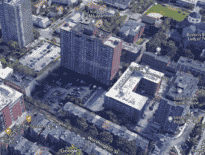Nearly 1 in 4 Massachusetts residents worked from home in 2021, new Census data shows, making the state the fourth-biggest adopter of the new mode of work.
During the first two years of the pandemic, the number of people working from home in the United States tripled, home values grew and the percentage of people who spent more than a third of their income on rent went up, the Census Bureau data shows.
An analysis of the data by the Bay Area Economic Council shows that Cambridge and Newton were the biggest adopters of remote work in Massachusetts, with 44 percent and 43.9 percent of workers in those cities working remotely last year. Nationally, tech hubs like Redmond, Washington and Mountain View, California – home to Microsoft and Google, respectively – and Washington, D.C. suburbs like Bethesda, Maryland showed the biggest adoption of the trend, with nearly 50 percent or more of their workers taking part.
Providing the most detailed data to date on how life changed in the U.S. under COVID-19, the bureau’s American Community Survey 1-year estimates for 2021 showed that the share of unmarried couples living together rose, Americans became more wired and the percentage of people who identify as multiracial grew significantly. And in changes that seemed to directly reflect how the pandemic upended people’s choices, fewer people moved, preschool enrollment dropped and commuters using public transportation was cut in half.
The data release offers the first reliable glimpse of life in the U.S. during the COVID-19 era, as the 1-year estimates from the 2020 survey were deemed unusable because of problems getting people to answer during the early months of the pandemic. That left a one-year data gap during a time when the pandemic forced major changes in the way people live their lives.
The survey typically relies on responses from 3.5 million households to provide 11 billion estimates each year about commuting times, internet access, family life, income, education levels, disabilities, military service and employment. The estimates help inform how to distribute hundreds of billions of dollars in federal spending.
Response rates significantly improved from 2020 to 2021, “so we are confident about the data for this year,” said Mark Asiala, the survey’s chief of statistical design.
While the percentage of married-couple households stayed stable over the two years at around 47 percent, the percent of households with unwed couples cohabiting rose to 7.2 percent in 2021 from 6.6 percent in 2019. Contrary to pop culture images of multigenerational family members moving in together during the pandemic, the average household size actually contracted from 2.6 to 2.5 people.
People also stayed put. More than 87 percent of those surveyed were living in their same house a year ago in 2021, compared to 86 percent in 2019. America became more wired as people became more reliant on remote learning and working from home. Households with a computer rose, from 92.9 percent in 2019 to 95 percent in 2021, and internet subscription services grew from 86 percent to 90 percent of households.
Housing demand grew over the two years, as the percent of vacant homes dropped from 12.1 percent to 10.3 percent. The median value of homes rose from $240,500 to $281,400. The percent of people whose gross rent exceeded more than 30% of their income went from 48.5 percent to 51 percent. Historically, renters are considered rent-burdened if they pay more than that.
“Lack of housing that folks can afford relative to the wages they are paid is a continually growing crisis,” said Allison Plyer, chief demographer at The Data Center in New Orleans.
Commutes to work dropped from 27.6 minutes to 25.6 minutes, as the percent of people working from home during a period of return-to-office starts and stops went from 5.7 percent in 2019 to almost 18 percent in 2021. Almost half of workers in the District of Columbia worked from home, the highest rate in the nation, while Mississippi had the lowest rate at 6.3 percent Over the two years, the percent of workers nationwide using public transportation to get to work went from 5 percent to 2.5 percent, as fears rose of catching the virus on buses and subways.
“Work and commuting are central to American life, so the widespread adoption of working from home is a defining feature of the COVID-19 pandemic,” said Michael Burrows, a Census Bureau statistician. “With the number of people who primarily work from home tripling over just a two-year period, the pandemic has very strongly impacted the commuting landscape in the United States.”




 |
| 


